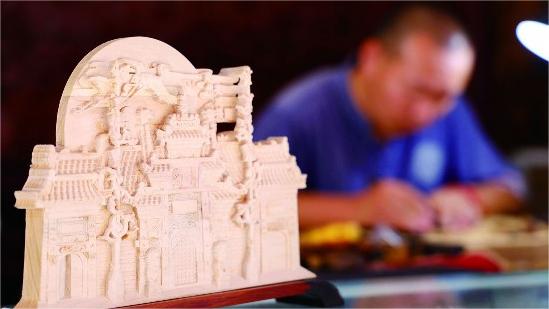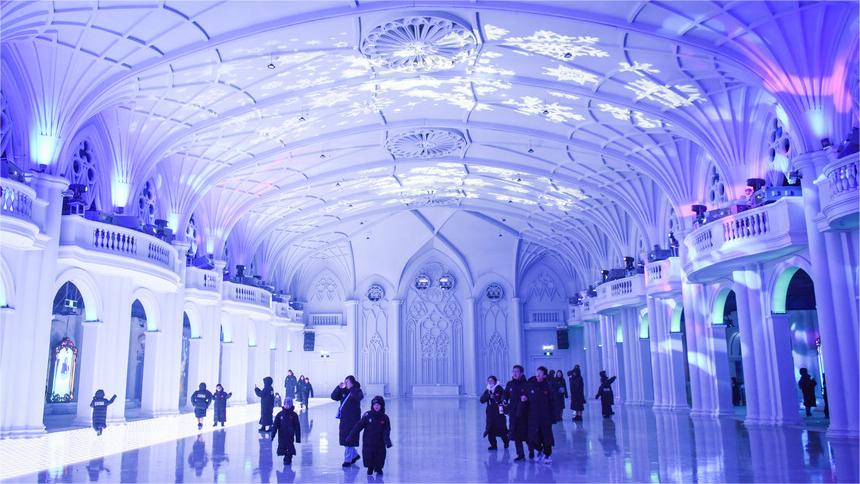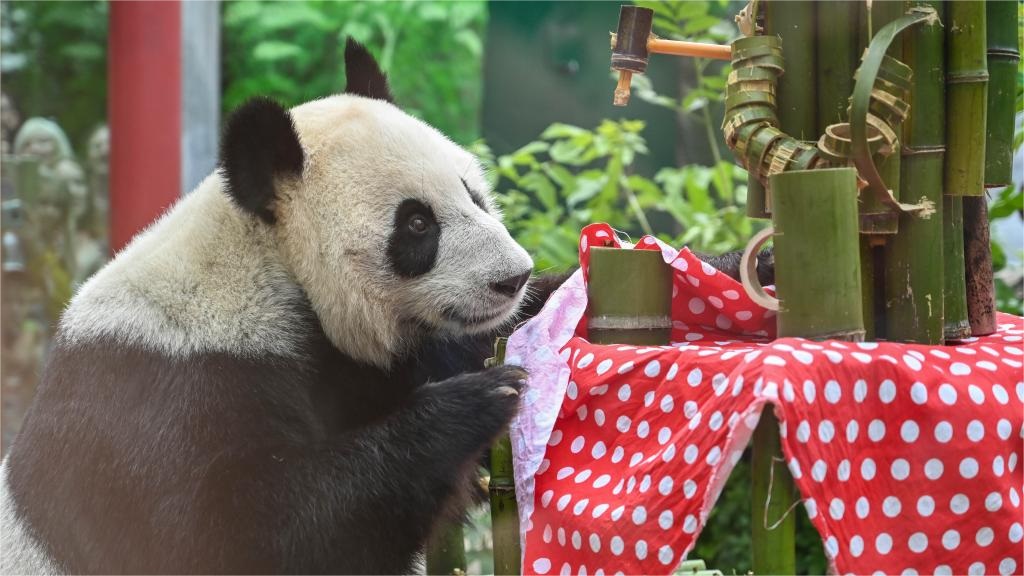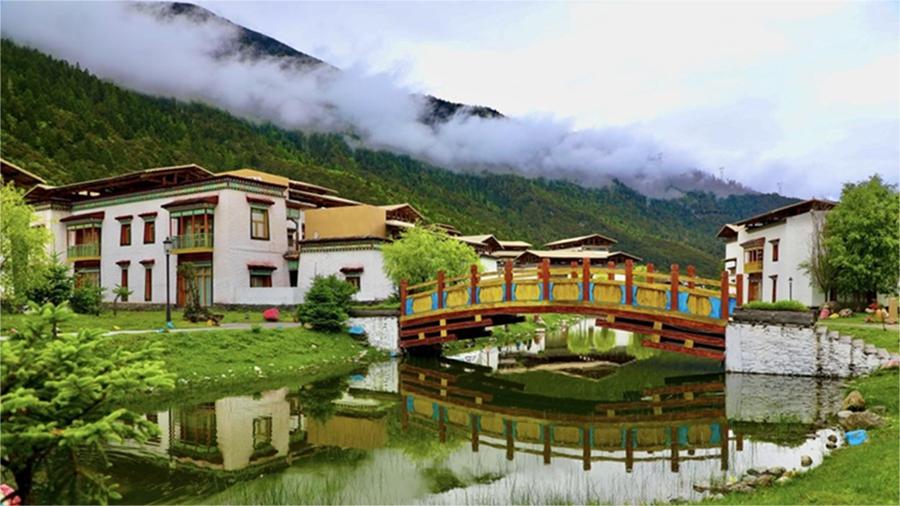Ancient Yixing purple clay pottery experiences modern revival
Yixing, a county-level city administered by Wuxi city, east China’s Jiangsu Province, is hailed as the “pottery capital” of China. Well known for its purple clay, Yixing has been crafting purple clay pottery since the Song and Yuan dynasties (960-1368), with the practice flourishing during the Ming Dynasty (1368-1644).
Pottery made from Yixing's purple clay has gained worldwide recognition. The technique of making Yixing purple clay pottery was inscribed as a national-level intangible cultural heritage in 2006, and its fame is intertwined with the spread of Chinese tea culture.
Preserving traditions
At the ceramic school of Wuxi Vocational Institute of Arts & Technology, Xie Qiang, a national-level master of arts and crafts and provincial-level inheritor of the technique of making Yixing purple clay pottery, was demonstrating the traditional method of making a purple clay teapot.
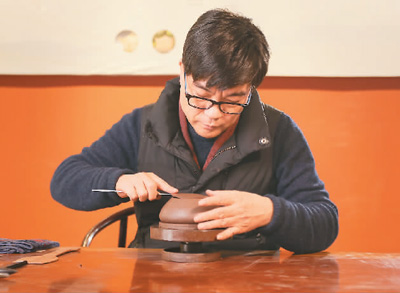
Xie Qiang, a national-level master of arts and crafts and provincial-level inheritor of the technique of making Yixing purple clay pottery, works on a purple clay teapot. (Photo courtesy of the interviewee)
"This is the traditional method, but mastering it requires solid basic skills," Xie said, explaining the slapping technique he used to form the teapot.
To hone these skills, Xie learned from renowned purple clay artist Xu Yuanming in the early 1990s and later from Bao Zhiqiang, a national-level master of arts and crafts.
With nearly 40 years of experience, Xie's works have won multiple awards in national competitions, and he has been bestowed with many national-level honorary titles. Besides refining his craft through practice, Xie has published several books on purple clay art.

Photo shows a set of purple clay pottery works by Xie Qiang. (Photo courtesy of the interviewee)
Innovation
Xie has infused traditional cultural elements into his purple clay teapots but has also improved the traditional technique through innovation. In 2023, his project on the innovation of the purple clay technique and the integration of cultural elements won a second prize for technological progress from the China National Light Industry Council.
At present, Xie has completed over 100 pieces in his "Chinese civilization" series of purple clay pottery works, including the ancient tea set series that showcases the artistic styles of different eras. For example, his tea set inspired by the style of the Qin Dynasty (221 BC-207 BC) incorporates terracotta warrior elements, while the tea set modeling the style of the Tang Dynasty (618-907) mimics the dynasty's gold and silver wares.
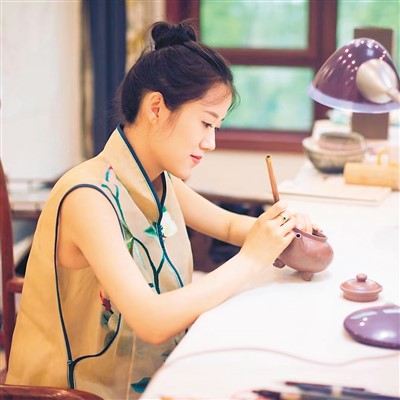
Xu Shenzi, Xie Qiang's apprentice, works on a purple clay teapot. (Photo courtesy of the interviewee)
Xu Shenzi, Xie's apprentice, worked in the purple clay pottery industry in Yixing after she obtained a master's degree from Nanjing University of the Arts in Nanjing, capital of Jiangsu. Born in 1988, Xu is already recognized as a national technical expert. Her purple clay pottery works blend ancient and modern styles. One of her purple clay pottery works won a gold award at the 12th China Ceramic Art Exhibition in 2022.
Nurturing talent
In recent years, Wuxi Vocational Institute of Arts & Technology has committed itself to supporting the practice of purple clay pottery by "passing on skills and nurturing new talents." In addition to students, the institute has also cultivated rural artisans. The training of rural artisans has helped in promoting rural cultural industry development while also contributing to rural revitalization.
Gu'nan Street in Dingshu township, Yixing attracts many young entrepreneurs, including descendants of local purple clay pottery families and graduates from prestigious art schools like Central Academy of Fine Arts and Nanjing University of the Arts. Many newcomers arrived without any pottery-making skills, but have apprenticed with local masters. These newcomers have been able to incorporate their backgrounds in painting, calligraphy, and modern design into the creation of purple clay pottery.
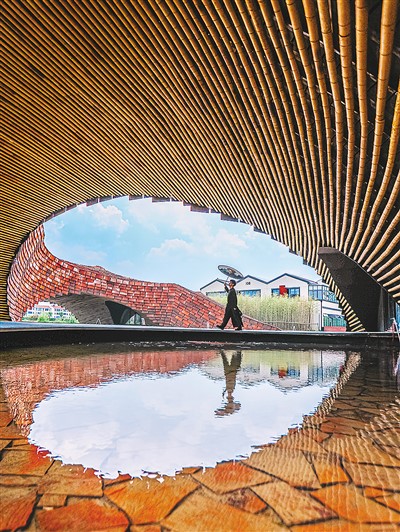
Photo shows a scene of the creative industrial park transformed from a purple clay pottery factory in Yixing, east China's Jiangsu Province. (Photo courtesy of the publicity department of the Communist Party of China Yixing municipal committee)
Students from art schools outside Yixing have injected new life into the city's purple clay pottery industry, according to Lyu Fengping, executive curator of the Qian Songyan Art Museum in the city. The diversity of talent also fosters opportunities for the integration of culture, business, and tourism in the region.
Yixing purple clay pottery is also embracing the digital age. Jiangsu Culture Investment Group Co., Ltd. and a cultural company from Yixing jointly launched an app for the transaction of physical purple clay pottery artworks at the 20th China (Shenzhen) International Cultural Industries Fair held in May this year. The platform allows for each product to possess exclusive authorization and a unique identity, allowing for secure digital trading.
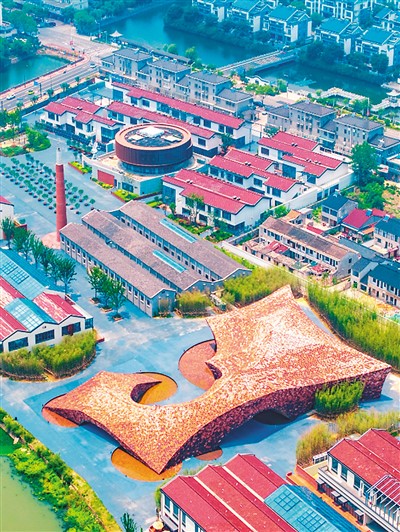
Photo shows the creative industrial park transformed from a purple clay pottery factory in Yixing, east China's Jiangsu Province. (Photo courtesy of the publicity department of the Communist Party of China Yixing municipal committee)
China’s “pottery capital” Yixing continues to promote and enhance its purple clay cultural brand, ensuring the continued spread of ancient pottery art and its thousand year cultural legacy.
Photos
Related Stories
- Inheritor dedicated to passing on traditional black pottery making techniques in China's Jiangxi
- Ancient Jieshou painted pottery revives in modern time
- Ancient pottery, kilns and wells unearthed in north China ruins
- Discover beauty of black pottery in SW China's Yunnan
- Prosperous red clay pottery industry boosts rural revitalization in S China's Guangxi
- Craftsman in E China's Shandong carries forward 4,000-year-old black pottery making techniques
- Craftsman from C China's Henan dedicated to promoting Tang tri-colored glazed pottery
Copyright © 2024 People's Daily Online. All Rights Reserved.






